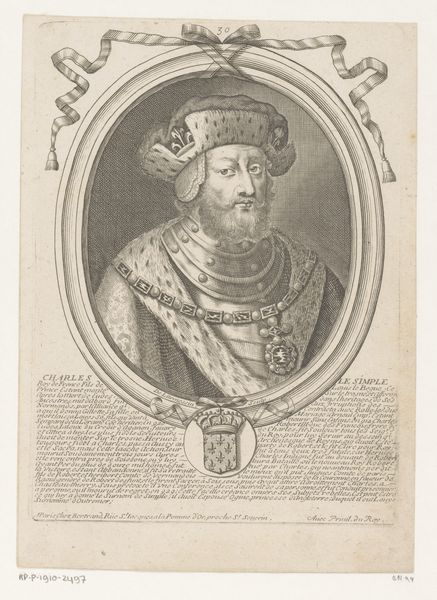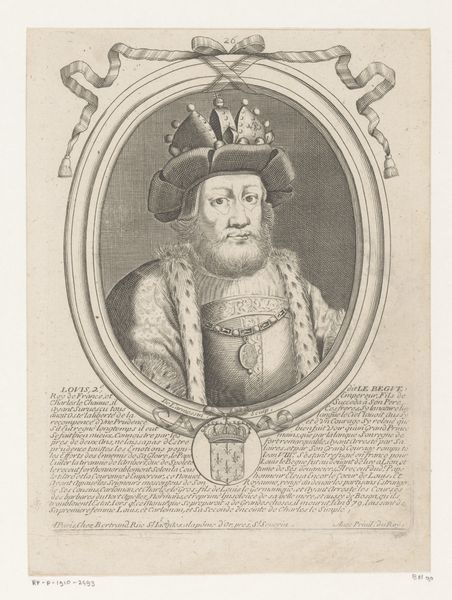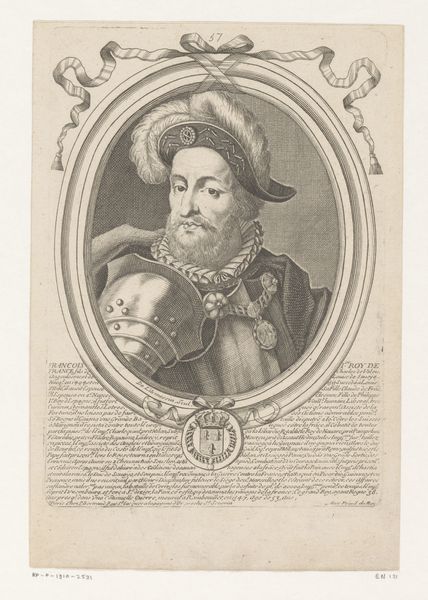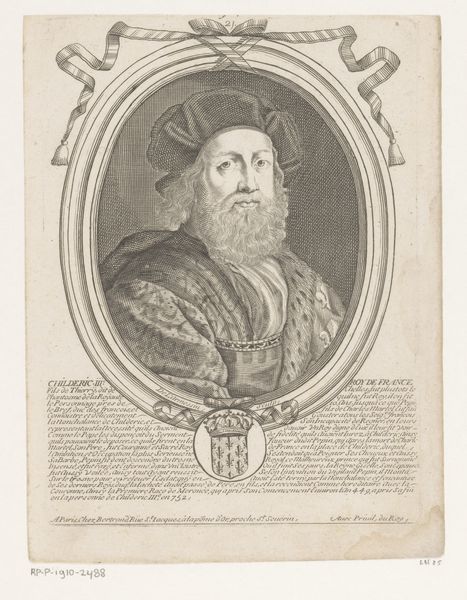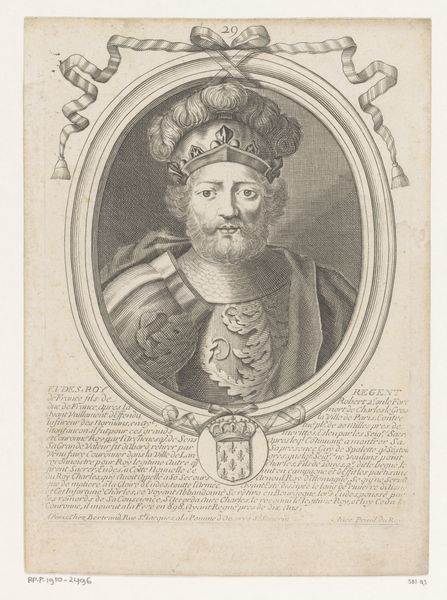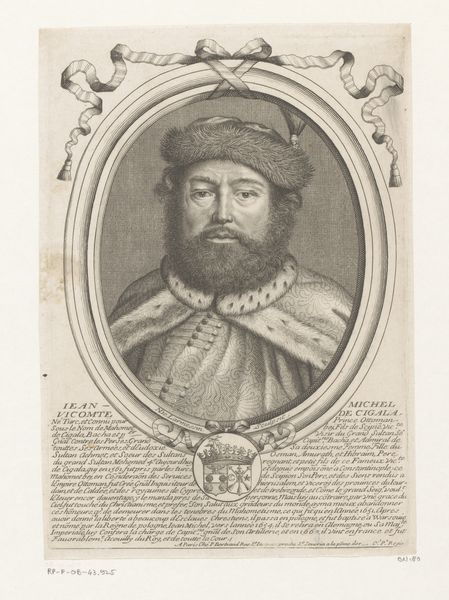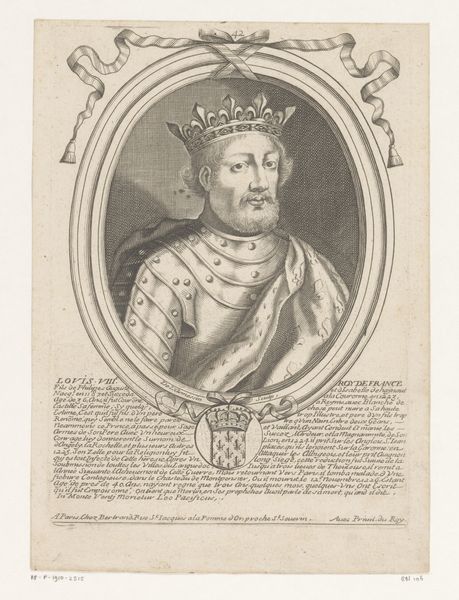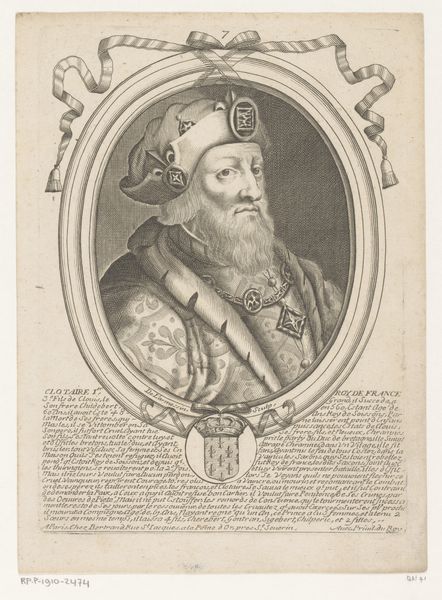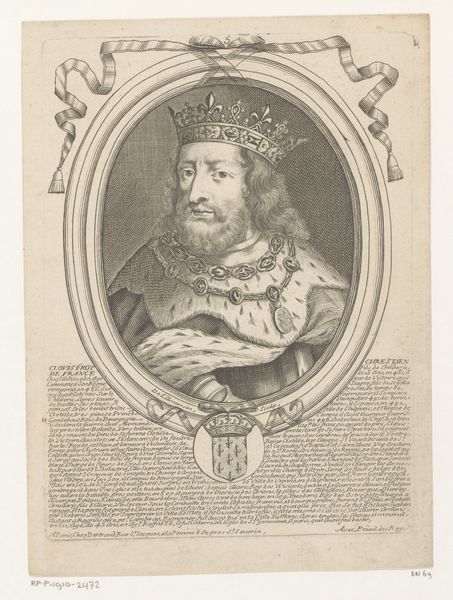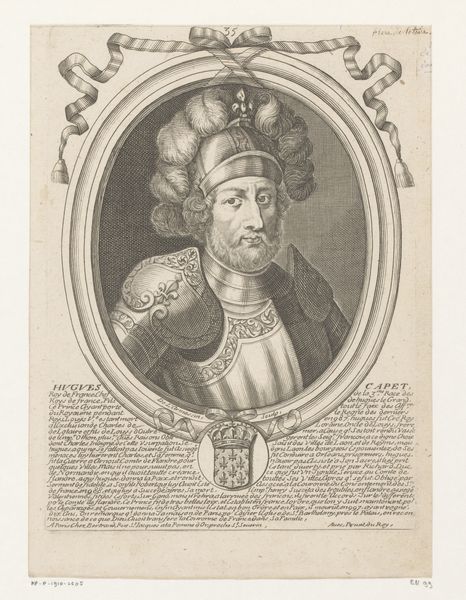
engraving
#
portrait
#
baroque
#
old engraving style
#
traditional media
#
history-painting
#
engraving
Dimensions: height 233 mm, width 170 mm
Copyright: Rijks Museum: Open Domain
Editor: This is a portrait of Louis IV, engraved by Nicolas de Larmessin, sometime between 1647 and 1678. The detail in the lines is incredible! What stands out to you? Curator: Well, I immediately notice the production process. This isn’t just about depicting royalty; it's about the labor involved in creating an engraving. The act of meticulously carving into the plate itself transforms Louis into a commodity, an image available for mass consumption. Editor: A commodity? Interesting way to put it. How so? Curator: Think about it. An engraving allowed for reproduction and wider distribution than a painting ever could. This image of Louis isn't just hanging in a palace; it's circulating. We have to consider the artisan who made this possible, making them as important as the monarch, disrupting this illusion that “high art” should have a monopoly. How might his socio-economic status shape the perception of his making a work featuring Royalty? Editor: So, by focusing on the engraving process, we're looking at the democratization of the royal image? The shift away from unique handmade fine art elevates the status of artisanal making and its impact? Curator: Precisely! It challenges our ideas about originality and value. It pushes us to recognize the power structures embedded within art itself, specifically its creation. The social context of how it's consumed tells a lot. The wide availability is crucial: this royal image, this supposed symbol of power and privilege, is available to those beyond court circles. It also raises interesting questions around labor and its value, wouldn't you agree? Editor: Definitely. It makes me consider the engraver’s role, and also the cost of the paper and the print itself. Who was buying these prints, and what did owning such an image signify for them? I had not considered those variables. Curator: Exactly! It changes how we perceive "Portret van Lodewijk IV," right? We move past the surface level and into questions about labor, value, and power relations during that time.
Comments
No comments
Be the first to comment and join the conversation on the ultimate creative platform.
